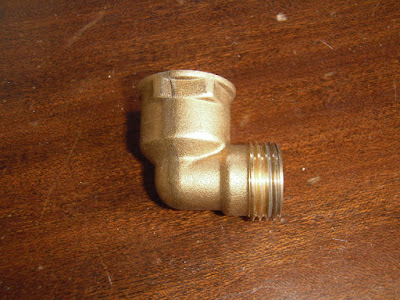Port side after scraping contact adhesive
On Wednesday morning I noticed that the domestic water pump was cutting in intermittently which it had never done before, other than when the taps were turned on, on further investigation I found a substantial amount of water in the saloon bilge which when put together with the pump cutting in indicated a leak in the domestic water system. After checking all the joints on the system I found the leak on the elbow for the calorifier relief valve and after removing the relief valve careful examination of the elbow showed a crack in the fitting.
Elbow showing crack
Searching through the odds and ends box I found replacement fitting which was duly fitted and hey presto the domestic water system is back to normal. Again to finish off the day I spent some more time scraping the cockpit benches.
First thing this morning, as the boat was afloat, I started the engine and gave it a good run to check the fuel system which appears to be all OK the idle speed required a minor adjustment to bring it up to the correct setting of 625 rpm. I did a bit more to the cockpit benches until rain stopped play so to finish up the day I came inside and did a further investigation into the wind instruments but to no avail it is a tad difficult without ant form of manual this will be a rainy day job as they are not particularly high on the outstanding job list. Now that the engine is sorted the plan is, weather permitting, to go sailing next week.






